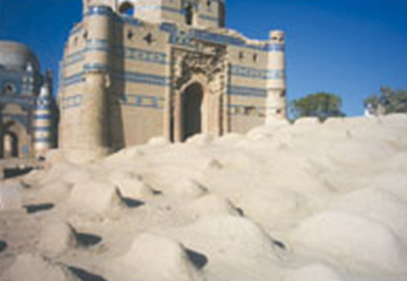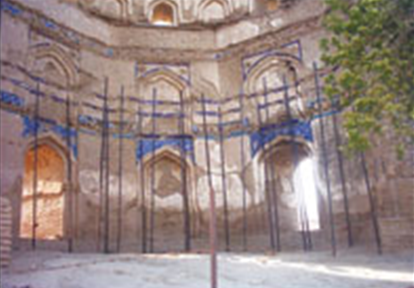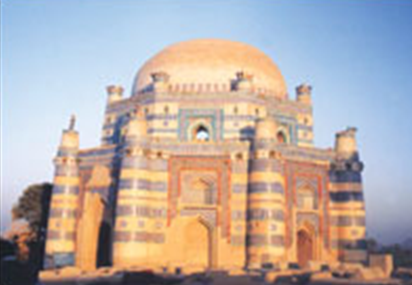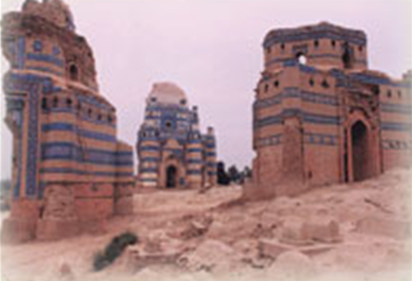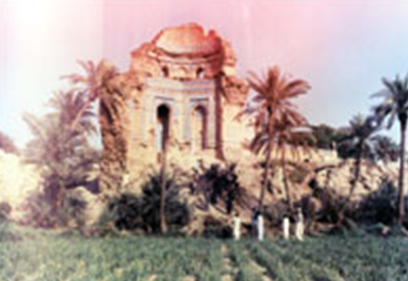Uch Sharif, southern Punjab
(→Uch Sharif, southern Punjab) |
(→Uch Sharif, southern Punjab) |
||
| (3 intermediate revisions by one user not shown) | |||
| Line 22: | Line 22: | ||
[[File: Uch Sharif, southern Punjab.PNG | Uch Sharif, southern Punjab |frame|500px]] | [[File: Uch Sharif, southern Punjab.PNG | Uch Sharif, southern Punjab |frame|500px]] | ||
[[File: Uch Sharif, southern Punjab1.PNG | Uch Sharif, southern Punjab |frame|500px]] | [[File: Uch Sharif, southern Punjab1.PNG | Uch Sharif, southern Punjab |frame|500px]] | ||
| − | |||
[[File: Uch Sharif, southern Punjab3.PNG | Uch Sharif, southern Punjab |frame|500px]] | [[File: Uch Sharif, southern Punjab3.PNG | Uch Sharif, southern Punjab |frame|500px]] | ||
[[File: Uch Sharif, southern Punjab4.PNG | Uch Sharif, southern Punjab |frame|500px]] | [[File: Uch Sharif, southern Punjab4.PNG | Uch Sharif, southern Punjab |frame|500px]] | ||
| Line 32: | Line 31: | ||
Located near the confluence of the River Indus and its tributaries, the Sutlej and the Chenab, Uch Sharif has always enjoyed the reputation of being an important town on the trade route along the rivers. Some historians consider Uch to be a city dating back to the Harrapa civilisation. | Located near the confluence of the River Indus and its tributaries, the Sutlej and the Chenab, Uch Sharif has always enjoyed the reputation of being an important town on the trade route along the rivers. Some historians consider Uch to be a city dating back to the Harrapa civilisation. | ||
| + | [[File: Uch Sharif, southern Punjab2.PNG | Uch Sharif, southern Punjab |frame|left|500px]] | ||
To date, the historic city has a flourishing crafts industry and its centuries old social fabric remains intact. However, Uch is also steeped in poverty, illiteracy, widespread heroin addiction and the custom of peeri-faqeeri. | To date, the historic city has a flourishing crafts industry and its centuries old social fabric remains intact. However, Uch is also steeped in poverty, illiteracy, widespread heroin addiction and the custom of peeri-faqeeri. | ||
Latest revision as of 04:16, 26 October 2013
This is a collection of articles archived for the excellence of their content. Readers will be able to edit existing articles and post new articles directly |
[edit] Uch Sharif, southern Punjab
City of Saints
By Rina Saeed Khan
Some historians consider Uch to be a city dating back to the Harrapa civilisation. To date, the historic city has a flourishing crafts industry and its centuries old social fabric remains intact. However, Uch is also steeped in poverty, illiteracy, widespread heroin addiction and the custom of peeri-faqeeri
The glazed blue tile-work on the mausoleum of Bibi Jawandi shimmers in the desert heat, having lost none of its lustre in the last one thousand years. From one side, the octagon shaped tomb looks intact –– walk around it and you realise that it has literally been sliced in half by floods. This dramatic ruin is the crowning glory of Uch Sharif, known as the city of saints in southern Punjab.
Located near the confluence of the River Indus and its tributaries, the Sutlej and the Chenab, Uch Sharif has always enjoyed the reputation of being an important town on the trade route along the rivers. Some historians consider Uch to be a city dating back to the Harrapa civilisation.
To date, the historic city has a flourishing crafts industry and its centuries old social fabric remains intact. However, Uch is also steeped in poverty, illiteracy, widespread heroin addiction and the custom of peeri-faqeeri.
In the midst of all these problems, a small group of dedicated professionals is trying to save Uch’s ‘living heritage’ by integrating community development along with conservation of heritage.
Architect Yasmin Cheema is the chairperson and one of the founders of the Conservation and Rehabilitation Centre (CRC), a non-governmental organisation established in 1994, which is working on conserving the monuments of Uch Sharif. Her project on the Uch Monument Complex was recently given the Award of Distinction by the 2006 Unesco Asia Pacific Heritage Awards for Culture Heritage Conservation.
The CRC has a holistic approach to conservation –– its founding members feel that to conserve the ‘living heritage’ in Pakistan’s historic cities, cultural needs have to be addressed simultaneously with an improvement of income, health, education and civic needs. It believes strongly that the incentive for development and cultural renaissance must come from within the communities themselves so that people of the area can learn to become responsible for their ‘constructed heritage’.
Uch is a unique historic city since many of its old monuments, shrines and centuries old neighbourhoods have been left untouched over the years with relatively little modern defacement.
Uch Bukhari is the oldest settlement in the town, dating back to about a thousand years and the monument complex that the CRC is trying to conserve is located in this settlement. The complex is located on a mound that is considered the city’s highest point.
There are hundreds of small, unmarked graves leading up to the monuments and palm trees dot the landscape beyond the dry river bed below. The three largest tombs of Bibi Jawandi, Hazrat Baha ul Halim and Ustad Nurya were all once complete mausoleums covered with exquisite glazed tile-work. Now they are in ruins, yet with their intricate tile-work, still apparent, it is not difficult to imagine them in the prime of their glory.
There is not much information available on the individuals who are buried in these tombs ––– the actual graves of Bibi Jawandi, Ustad Nurya and Hazrat Baha Ul Halim were shifted long ago. Ustad Nurya was the architect responsible for Bibi Jawandi’s mausoleum while Hazrat Baha ul Halim was a direct descendant of Syed Jalaluddin Bukhari (who settled in Uch in 1244 AD).
Bibi Jawandi still remains a mysterious figure to historians –– her mausoleum is the oldest of the three. The architectural style of her tomb is indigenous to Upper Sindh/Lower Punjab, where moulded bricks are used as decorative elements.
Syed Bukhari was the head of the religious order founded by Hazrat Bahauddin Zakriya, a famous Sufi saint of the Indian subcontinent whose tomb is located in Multan. Syed Surkh Bukhari laid the foundations of a religious school in Uch and many followers came to study under him, and later spread his theological message throughout the region. He was buried in a small town outside Uch –– but his tomb was damaged by floods, so in 1617 AD, his shrine was rebuilt in Mohalla Bukhari in Uch by the Nawab of Bahawalpur, Bahawal Khan II. The shrine is a short walk away from the cemetery.
The CRC has realised that the fate of the monuments and that of the living city are inextricably linked. The ‘living heritage concept’ recognises that the monuments and other built structures have to be addressed comprehensively as forming a part of the traditional way of life which is of value to the country and the world
The CRC’s initial interest in Uch began with their recognition of the problems threatening Bibi Jawandi’s tomb. “This was a unique monument that was slowly crumbling –– the tiles were becoming loose and falling, the retaining walls were going, the ground was being eroded by rainfall and water seepage from the neighbourhood’s open drains was eating into the foundations. The government’s archaeology department did not have the resources to do anything about it,” explains Cheema.
Yasmin Cheema was one of the first women to graduate with an architecture degree from the National College of Arts in 1966. It was her extensive research on Bibi Jawandi’s tomb for her Master’s dissertation for the Restoration Department of the Middle East Technical University in Ankara, Turkey, which led to the establishment of the CRC.
Cheema has also set up a neighbourhood rehabilitation centre in a district of Karachi with members of the Orangi Pilot Project. She is today considered one of the leading conservation experts in Pakistan of ‘constructed heritage’. Uch, of course, has been her pet project and she has now been involved with the conservation efforts for 17 years. She even jokes that some day she would like to be buried in Uch, adding yet another tombstone to the ancient city!
The CRC discovered in its research of the tomb that rain water was penetrating deep into the foundations of the building, causing the mud/mortar structure to disintegrate slowly. Also, the site was vulnerable to vandalism by heroin addicts and children who play in the graveyard. The CRC decided to undertake careful documentation and stabilise the monuments and build a protecting wall around them.
According to the Unesco citation, “The restoration of the striking Uch Monument Complex has stabilised the monumental ruins of three tombs dating back to the 15th century within the context of a living cultural landscape. Given the paucity of historic evidence about the original building form, the decision to preserve the site as an archaeological complex is an appropriate one.”
Initially, the CRC got the money to begin their work by direct contributions and from the team’s own use of their professional fees. After hectic lobbying for three years, they managed to secure some funding from the World Monument Fund based in New York City. The World Monument Fund is a non-profit organisation, funded by large corporations.
Some of the other international projects funded by the World Heritage Fund are the city of St Petersburg in Russia and Pompeii in Italy. They gave the CRC a grant of $60,000 –– the third highest funding given to any project in the world. The grant enabled it to establish an office in Uch with paid staff.
In 1999, the CRC was awarded funding by the UNDP under their Local Initiative Facility for Urban Environment (LIFE) programme. LIFE funded a community-based environmental upgrading pilot project in Uch’s oldest settlement, Mohalla Bukhari, where the monuments are located.
The CRC has realised that the fate of the monuments and that of the living city are inextricably linked. The ‘living heritage concept’ recognises that the monuments and other built structures have to be addressed comprehensively as forming a part of the traditional way of life which is of value to the country and the world. The entire mapping of the city was completed under the LIFE grant.
“The government tends to concentrate its funds on Mughal architecture, while the earlier, dating back to seventh and eighth century Muslim architecture in this country is in shambles. This important heritage is being completely overlooked,” laments Cheema.
The CRC felt that the monuments should be consolidated, not renovated ––– and to preserve them for posterity, considerable work was done on the tiles and foundations to ensure that the weathering process did not cause any further damage.
Although it is a slow and painstaking work, the CRC’s pilot project is an important pioneering effort that can become a model for other historic cities in Pakistan.
According to the Unesco citation, “The deployment of innovative materials and techniques marks a welcome development for the field of conservation science in the sub region. As the conservation work has been consciously positioned within a larger project of rehabilitating the Uch settlement on a self-help basis, the local community stands to benefit directly.”
The CRC has demonstrated that a highly sophisticated approach to conservation is possible even in a remote corner of Punjab. Through their determination and expertise, they hope to be able to prove that entire historic cities can be saved for posterity.
History of Uch Sharif
An important riverine port, Uch has served as a religious and political centre of the region. In the late 10th century, during the Ghaznavid invasions of the subcontinent, important Muslim scholars and Sufis settled in Uch.
Over the centuries, the city continued to attract scholars and thinkers and became home to Sufi sanctuaries and religious educational institutions. Located on the banks of the River Indus (before it shifted its course in the 19th century), Uch enjoyed its heyday from the 12th to 17th century. As a frontier city of the western borders of India, it was often devastated by marauding conquerors.
During Emperor Akbar’s rule of India in the 16th century, it was absorbed into the Mughal administration. Today, Uch is made up of three settlements –– Uch Mughlan, Uch Bukhari and Uch Gilani. The last two reflect the institutionalisation of the Sufi tradition in the city. Uch Bukhari is named after the Sufi saint Syed Jalaluddin Surkposh Bukhari who established the family line of the Bukhari Sufis in Uch in the 13th century.
Uch Gilani is home to the followers and descendants of the Gilani line that was established by Syed Abdul Qadir Gilani II in Uch in the 15th century. The religious centrality has brought many visitors to Uch and to this day, it remains a city visited mainly by pilgrims.
